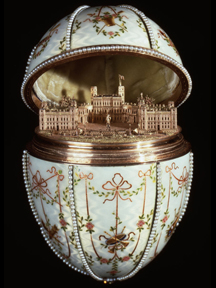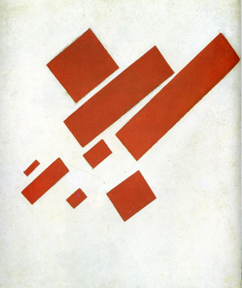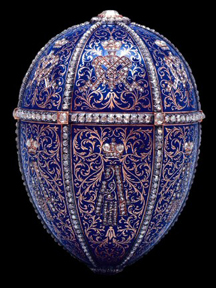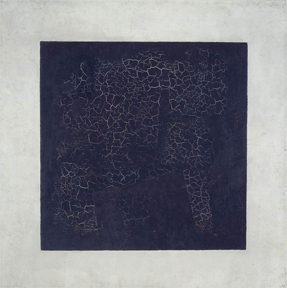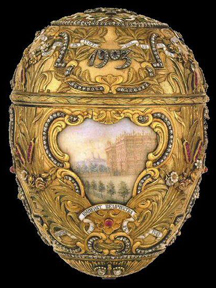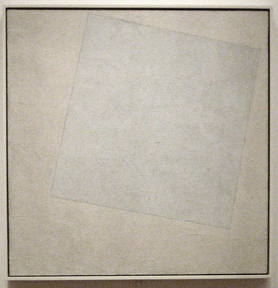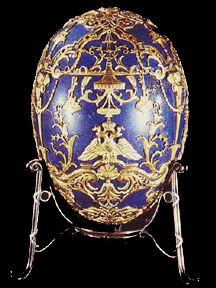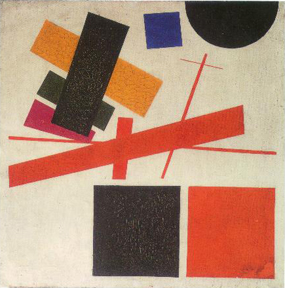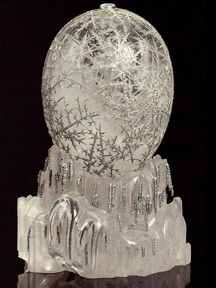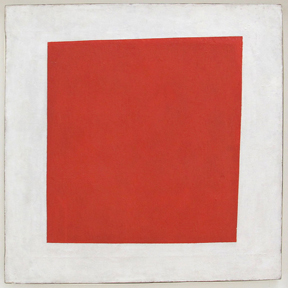Sylvanus Shaw | The Supremusic Egg Project
Spring Break Art Show 2016 | March 1 - 7 | Skylight at Moynihan Station | 421 Eighth Avenue, NYC
Download Press Release HERE
In 1885 Peter Carl Fabergé presented a jeweled egg, known as the First Hen to Tsar Alexander III, who gave it to his wife, the Empress Maria Feodorovna. The egg was so treasured by the Tsar and Empress that Alexander III commissioned additional eggs of Fabergé every Easter for his wife and mother, a tradition Tsar Nicholas II continued until the overthrow of the Russian monarchy in 1917. Faberge’s sumptuous, jewel-encrusted eggs have since become among the most famous and valued objects to have emerged from the waning decades of pre-Revolutionary Russia, rivaled only by a production that could hardly be more different: a series of canvases by Kasimir Malevich in a mode he called “Suprematism,” depicting painted shapes, occasionally overlapping, some in black, some in color, on white grounds. From 1904 until 1910, Malevich studied at the Moscow School of Painting, Art and Architecture, a few blocks from the Fabergé studio, and on December 19, 1915—the year the imperial family purchased Fabergé’s Red Cross with Triptych egg and Red Cross with Imperial Portraits egg—Malevich debuted 39 of his now famous Suprematist paintings at the Last Futurist Exhibition 0,10.
Aesthetically, the work of Malevich and Fabergé seems irreconcilable. The spare geometry and spiritual unpinning of Malevich’s Suprematist paintings look to the future; they are expressly avant-garde creations, seeking a deliberate break from art historical precedents. Fabergé’s eggs, by contrast, embody and arguably mark the culmination of the decorative arts tradition. As imperial commissions, the eggs epitomize the baroque opulence (and decadence) of the Romanov dynasty, and as Easter commemorates the death and resurrection of Christ in the Christian calendar, the imperial eggs honor Romanov history, including its members (Peter the Great, Catherine the Great, Tsarevich, Alexander III), victories (Napoleonic), voyages (Memory of Azov, Standart Yacht), and residences (Alexander Palace, Danish Palaces, Caucasus, Gatchina Palace). Fabergé’s creations are precise and invariably as seamless as the eggs they represent. By contrast, the sole surviving photograph of the 0,10 exhibition shows 21 of Malevich’s paintings, hung salon-style with handwritten inscriptions that curl from the room’s uneven walls. The surfaces of the paintings, some of which are now irreparably cracked, reveal the artist’s hand in swirling brushstrokes, the uneven application of paint, and pentimenti. While these canvases are expressly non-representational, the eggs delight in illusion and figuration, including portraits of the imperial family and miniature replicas of the coronation carriage and imperial yacht.
The only photograph of Suprematist works by Kazimir Malevich exhibited at the Last Futurist Exhibition 0,10 (Petrograd, 1915)
Sylvanus Shaw began work on the Supremusic Egg Project in 2010, in anticipation of the centennial of the 0,10 exhibition. The project consists of 52 paintings, each of which pairs the name of a Fabergé egg with the imagery of Malevich’s Suprematism: Eight Red Rectangles. The resulting combinations are at once commemorative, exploring the shared history of the two bodies of work, yet at the same time counterfactual and anachronistic, given that no actual connection existed between these works in the waning years of Imperial Russia. The Fabergé eggs were the personal treasures of the imperial family, not objects of public display. In this sense, the Supremusic Egg Project is a re-write of history, evoking the “official” histories of post-revolutionary/Stalinist Russia in a manner sympathetic to both Malevich’s efforts to break from history and Fabergé’s aim to sanctify the past.
This specific history distinguishes the Supremusic Egg Project from similar atemporal and formalist trends in current painting. The 52 panels, composed over several years using leftover paint from the artist’s palette, do not attempt to simulate or re-animate a modernist mode; rather, they present and re-present a specific painting titled after specific Fabergé eggs, tied to a specific moment in pre-Revolutionary Russia. How non-objective can a copy of a non-objective painting be, given that the copy has a clear referent, a thing in the world it is picturing? Or for that matter, how atemporal can a commemoration be? While the competing perspectives of Fabergé (opulent imperial) and Malevich (visionary purist) may be as relevant as ever, it is in the tendency to historicize that this juxtaposition is perhaps most felt. Notably, the ideals embodied by Fabergé’s eggs catalyzed the Bolshevik revolution, ultimately toppling the eggs’ exalted subject, just as Suprematism’s successful break from tradition has made it yet another art movement in the contemporary painter’s playbook. The Supremusic Egg Project engages in its own ironic historicization, rewriting and underwriting its own brief history.
Early photograph of the Supremusic Egg Project taken in the artist's Harlem studio ( New York City, 2011)
Recent photograph of the Supremusic Egg Project taken in the artist's Brooklyn studio ( New York City, 2015)


